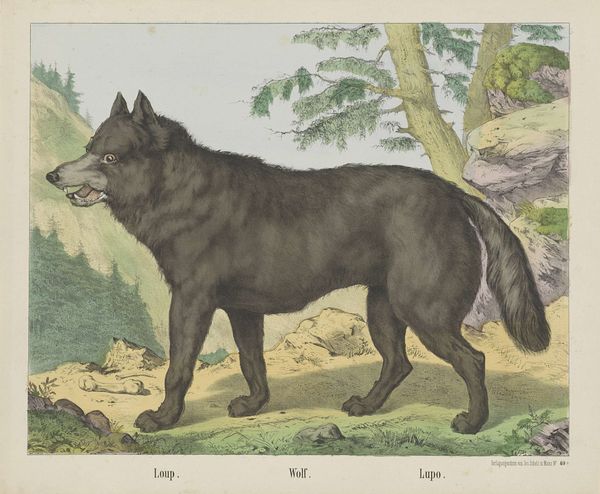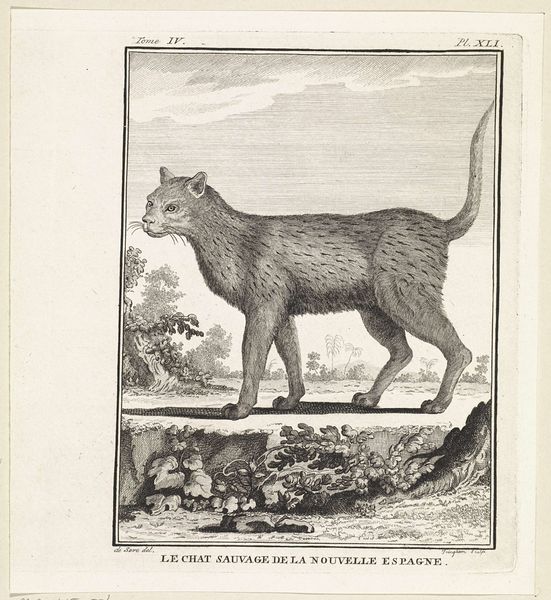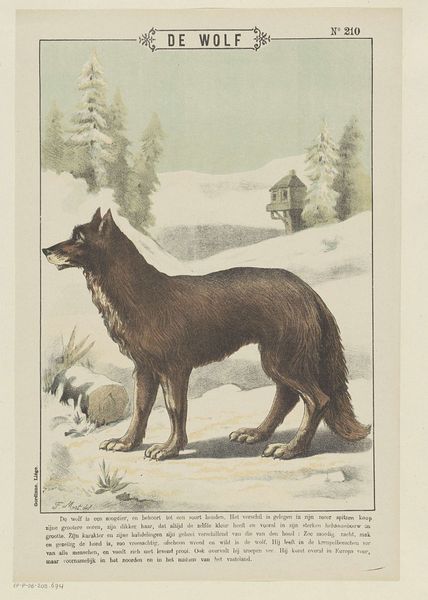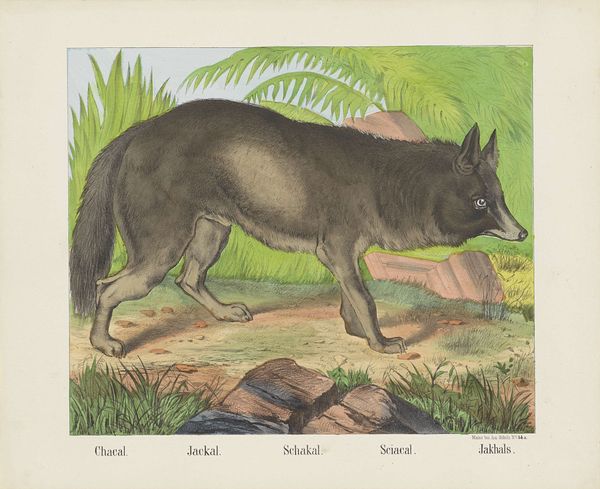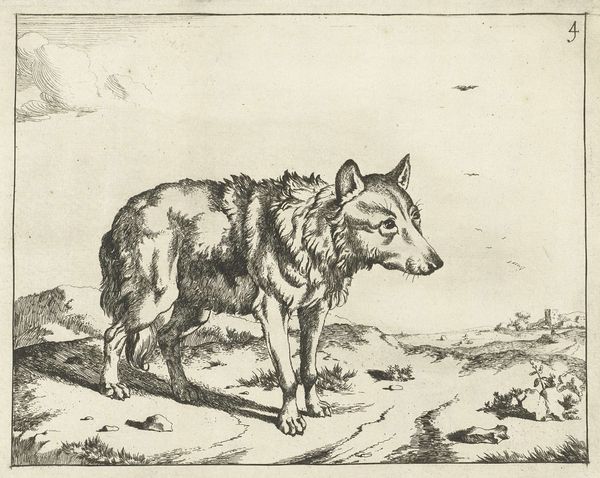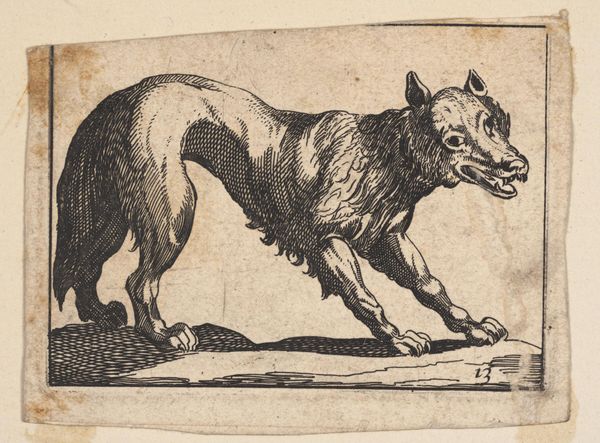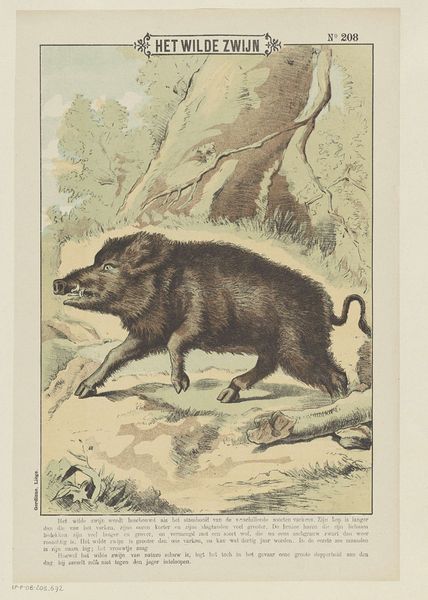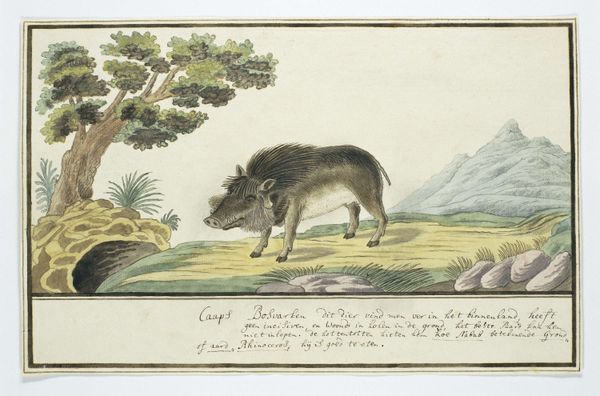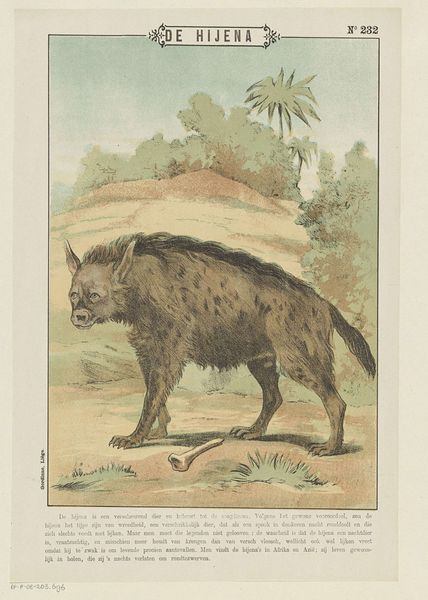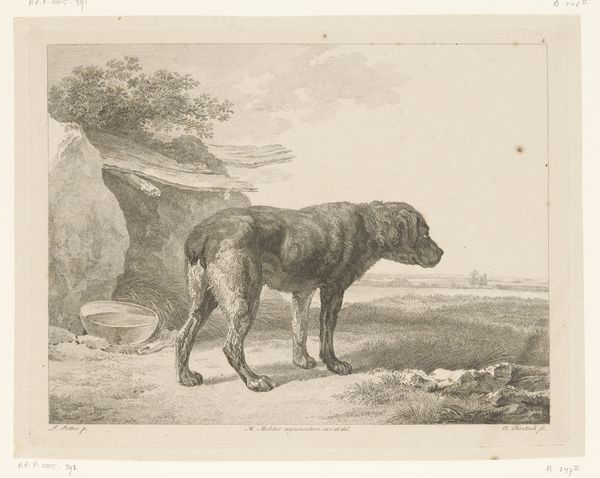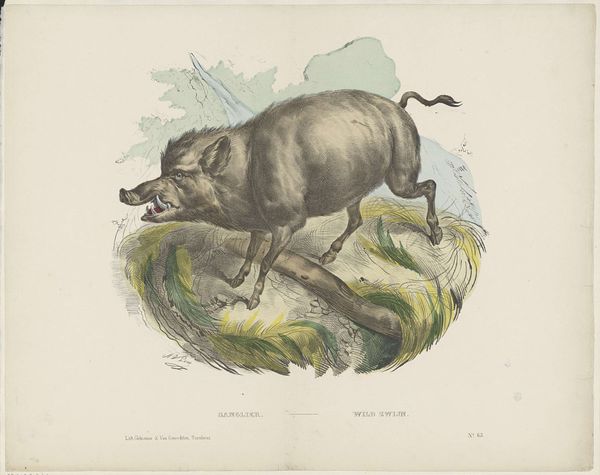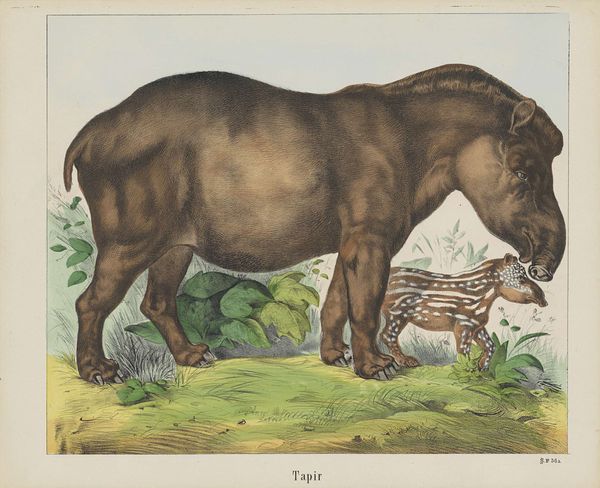
drawing, coloured-pencil
#
drawing
#
coloured-pencil
#
animal
#
landscape
#
coloured pencil
#
watercolour illustration
#
realism
Dimensions: height 350 mm, width 427 mm
Copyright: Rijks Museum: Open Domain
Editor: This is "Loup. / Wolf. / Lupo" by firma Joseph Scholz, dating from 1829 to 1880. It's a colored pencil drawing currently at the Rijksmuseum. I'm struck by the wolf's unsettling gaze and how it stands in a seemingly desolate landscape. What do you make of this piece? Curator: It’s interesting how the wolf, typically a symbol of wilderness, is presented here. The landscape is sparse, hinting at human impact or perhaps illustrating a pre-existing ecological understanding. Consider the timeframe—mid-19th century. This period saw increased human encroachment on wild habitats, fueled by industrialization. Could this image be interpreted as a commentary on that? Editor: That’s a really insightful point! The starkness could definitely represent that tension between the natural world and encroaching civilization. Do you think the fact that the title is in three different languages—French, English, and Italian—suggests something about its intended audience? Curator: Precisely! It implies a pan-European viewership, reflecting the burgeoning print market and an interest in natural history circulating among the educated middle class. The image becomes a commodity, disseminated across linguistic and national boundaries, simultaneously romanticizing and perhaps even 'exoticizing' the animal. Were wolves a popular subject during this time? Editor: That’s a good question. I suppose I always thought they were portrayed more negatively, like in fairy tales. Curator: And there's the rub! Consider how deeply ingrained those negative representations were. The choice to depict the wolf with such direct eye contact challenges that narrative, perhaps prompting a reevaluation of the animal’s place in the world. The political implications, particularly relating to land use and animal rights advocacy, could be quite profound. Editor: I never considered the broader political implications. It's fascinating to think about how even a seemingly straightforward image of a wolf can be a window into the complex social and cultural issues of its time. Curator: Exactly. The image operates on multiple levels, from scientific documentation to subtle social critique. Art provides insight to prevailing social and political perceptions.
Comments
No comments
Be the first to comment and join the conversation on the ultimate creative platform.
